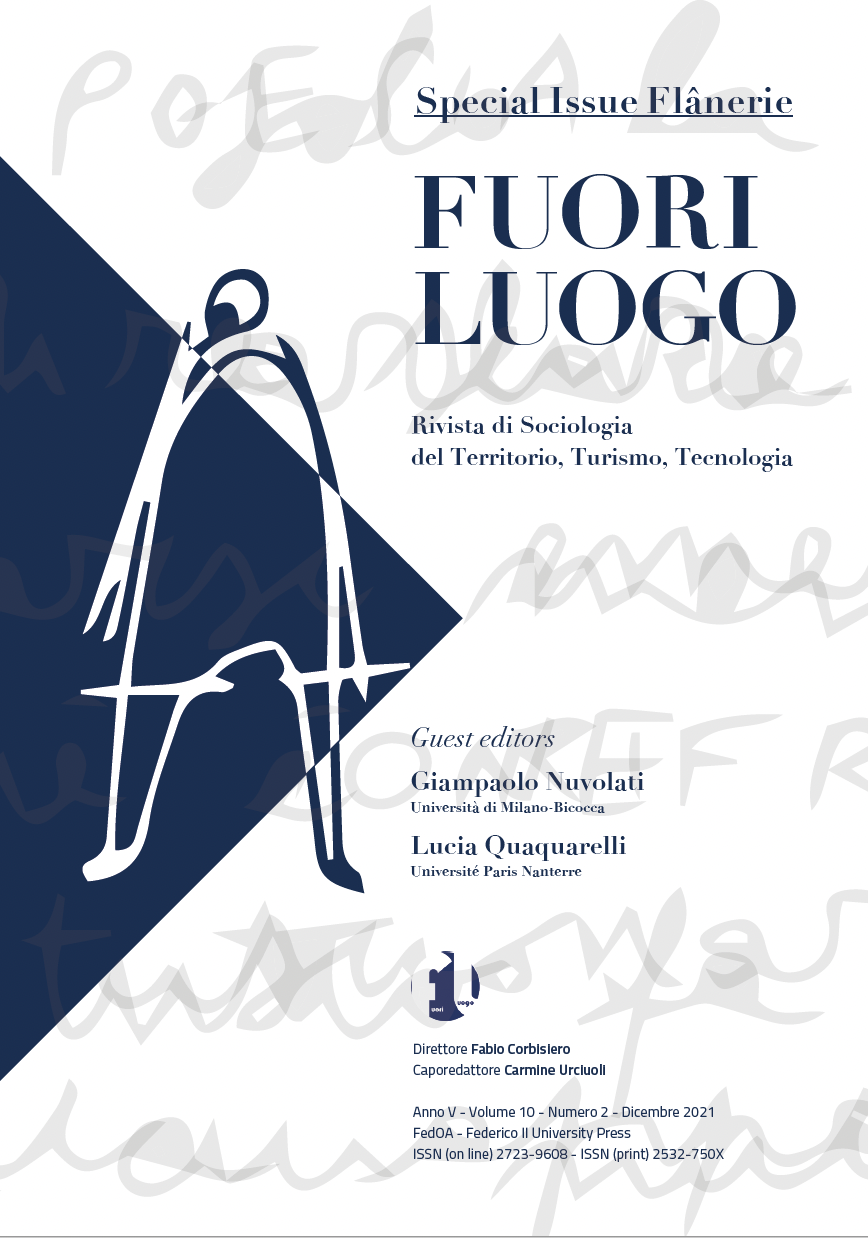Flâneur: staying on the threshold to look at urban spaces. A way to retrace
Abstract
The flâneur represents an urban physiognomy which is intrinsically related to the city itself. This notion springs from the works of Baudelaire, who popularised this figure.
According to Benjamin, the prototype of the flâneur is Hessel: the two friends started drafting Passagenwerk in 1927, and it was from Hessel that Benjamin learnt the art of strolling. Benjamin produced his first dialectical images on Naples, a city he visited several times since 1924. In Capri he met the actress Asja Lacis, who directed him towards the Marx's works. Moreover, here he wrote the “Gnoseological Preface” to Ursprung des deutschen Trauerspiels.
At first, this article discusses Benjamin’s methodology and the general concept of flâneur. Physiognomic perspective, micrological processing and archaeological method are applied to the urban dimension – a theatre of behaviours, therefore a remarkable environment from which to investigate the dynamics of our age. The flâneur occupies the doorstep and seeks urban interstices In the city, time does not flow but settles; ancient and modern times coexist;calculation prevails over sentimentalism. Then it inquires the finding to the above-mentioned method. Other authors, the architect Kracauer and the musicoligist Adorno, are considerate flâneur and they reflect on several cities like Paris, Moscow and Berlin.
Generally the correlation is between behavioural aspects and urban forms; architecture witnesses the rhythm of the community and the power games of history; the Baudelairian idea of correspondence is preferred to deterministic relations. Benjamin denies the linearity of time and progress: crossing the city means coming into contact with the “Ur”; his steps on the asphalt awaken an astonishing resonance and the streets became trails or labyrinths. The polarities of the reality are transformed into dialectical images that, assembled together, cause the shock of awakening. The futility of wandering aimlessly becomes a philosophical stance in opposition to modern capitalist society.
Subsequently this methodology is transposed to the contemporaneity: the flâneur’s eye can still represent nowadays a valid contribution to inspect reality. The paper analyses the consequences of the stereotypes generated by cultural and film industries on the city of Naples. Benjamin represents the anti-tourists. If tourists look into a shop window, Benjamin sees the phantasmagoria of commodities. If tourists collect typical postcards, he produces dialectical images. The ruins of ancient civilizations, he points out, are converted into a fetish by the tourism industry.
Downloads
Copyright (c) 2022 Francesca Starace

This work is licensed under a Creative Commons Attribution 4.0 International License.




